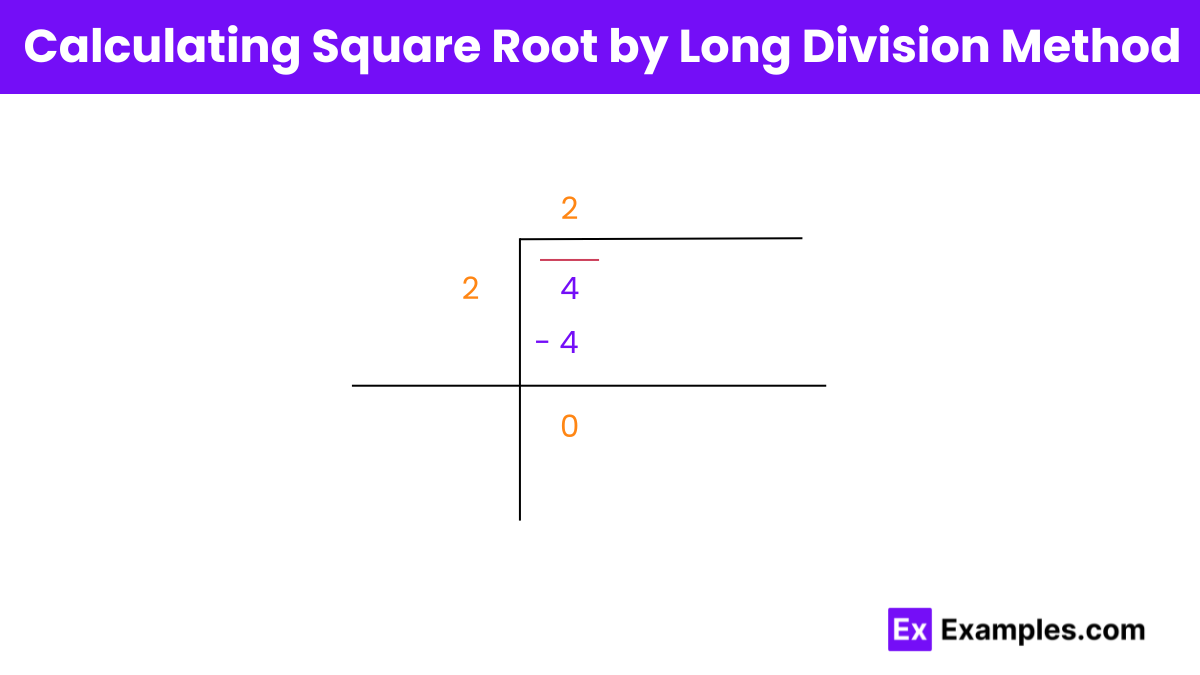Calculate the square root of 16 divided by the square root of 4.
1
2
3
4

To calculate the square of 4, you simply multiply 4 by itself:
The square of 8, denoted as 4², is the result of multiplying the number 8 by itself. In mathematical terms, So, the square of 4 is 16. Geometrically, this means that if you have a square with each side measuring 6 units, the total area enclosed by the square will be 16 square units.
The square root of 4, denoted as √4, is a number that, when multiplied by itself, equals 4. In mathematical terms, So, the square root of 4 is 2. This is because 2 multiplied by itself equals 4.In geometric terms, the square root of 4 represents the length of each side of a square with an area of 4 square units.
It is a fundamental concept in mathematics and serves as a building block for understanding more complex mathematical operations and concepts. It’s one of the simplest square roots and is used extensively in various mathematical calculations and problem-solving scenarios.
Exponential Form: 4^½ or 4^0.5
Radical Form: √2
The square root of 4 (√4) is equal to 2. Since 2 can be expressed as the ratio of two integers (2/1), where both 2 and 1 are integers and the denominator is not zero, √4 is classified as a rational number.

Square Root of 4 (√4):
A perfect square is a number that can be expressed as the product of an integer multiplied by itself. In other words, it is the square of an integer.
Since 2×2 = 4, 4 can be expressed as the square of the integer 2. Therefore, 4 is indeed a perfect square.
The square root of 4 is significant in mathematics as it represents the length of each side of a square with an area of 4 square units. It is also used in various calculations, such as finding side lengths, solving equations, and determining geometric properties.
No, the square root of 4 cannot be simplified further because it is already in its simplest form as 2.
The square root of 4 has practical applications in fields such as geometry, physics, engineering, and finance. It is used to calculate dimensions, distances, areas, and volumes in various real-world scenarios.
Text prompt
Add Tone
10 Examples of Public speaking
20 Examples of Gas lighting
Calculate the square root of 16 divided by the square root of 4.
1
2
3
4
What is the square root of 4 multiplied by 3?
6
7
8
9
Find the number whose square root is 2.
2
4
8
16
What is the square of 4?
8
12
16
21
Find the square root of 4.
0
1
2
3
What is 4 raised to the power of 2?
8
12
16
20
If x² = 4, what are the possible values of x?
2
-2
2 and -2
4
What is the result of 4 squared minus the square root of 4?
12
14
16
18
What is the difference between the square of 4 and the square root of 4?
12
14
16
18
If a number squared is 4, what is that number?
1
2 or -2
3
5
Before you leave, take our quick quiz to enhance your learning!

